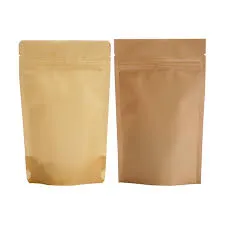- Afrikaans
- Albanian
- Amharic
- Arabic
- Armenian
- Azerbaijani
- Basque
- Belarusian
- Bengali
- Bosnian
- Bulgarian
- Catalan
- Cebuano
- chinese_simplified
- chinese_traditional
- Corsican
- Croatian
- Czech
- Danish
- Dutch
- English
- Esperanto
- Estonian
- Finnish
- French
- Frisian
- Galician
- Georgian
- German
- Greek
- Gujarati
- haitian_creole
- hausa
- hawaiian
- Hebrew
- Hindi
- Miao
- Hungarian
- Icelandic
- igbo
- Indonesian
- irish
- Italian
- Japanese
- Javanese
- Kannada
- kazakh
- Khmer
- Rwandese
- Korean
- Kurdish
- Kyrgyz
- Lao
- Latin
- Latvian
- Lithuanian
- Luxembourgish
- Macedonian
- Malgashi
- Malay
- Malayalam
- Maltese
- Maori
- Marathi
- Mongolian
- Myanmar
- Nepali
- Norwegian
- Norwegian
- Occitan
- Pashto
- Persian
- Polish
- Portuguese
- Punjabi
- Romanian
- Russian
- Samoan
- scottish-gaelic
- Serbian
- Sesotho
- Shona
- Sindhi
- Sinhala
- Slovak
- Slovenian
- Somali
- Spanish
- Sundanese
- Swahili
- Swedish
- Tagalog
- Tajik
- Tamil
- Tatar
- Telugu
- Thai
- Turkish
- Turkmen
- Ukrainian
- Urdu
- Uighur
- Uzbek
- Vietnamese
- Welsh
- Bantu
- Yiddish
- Yoruba
- Zulu
parts of a box
Understanding the Parts of a Box
Boxes are a fundamental part of our everyday lives, utilized for storage, transportation, and organization. While they may seem simple, a box is composed of several key parts, each of which serves a specific purpose. Understanding these components can enhance our appreciation for packaging design and functionality.
1. The Box Structure
At its core, a box typically consists of a rectangular or square structure. This structure can be made from various materials such as cardboard, plastic, or metal. The choice of material depends on the box's intended use—whether for lightweight items, heavy objects, or fragile goods. The walls of the box provide protection to its contents and determine the strength and durability of the box. For instance, double-walled cardboard offers more protection than single-walled cardboard, making it ideal for shipping delicate items.
2. The Flaps
.
One of the most distinctive features of a box is its flaps. Generally, a box has four flaps—two on the top and two on the bottom. These flaps can be folded in to close the box, securing the contents inside. The design of the flaps can vary; some boxes have interlocking flaps for added stability, while others may have adhesive seals or tabs that ensure the box remains closed during transit. Flaps play a critical role not only in securing the contents but also in providing a surface for branding and labeling.
3. The Lid
In some cases, boxes may come with a separate lid, particularly in the case of decorative boxes or storage containers. The lid adds an extra layer of protection and keeps dust and debris away from the contents. It provides a more polished appearance, especially for gift boxes or specialty packaging. Lids can be hinged, removable, or sliding depending on the design and functionality required.
parts of a box

4. The Bottom
The bottom part of the box is crucial for its stability. It supports the weight of the contents and ensures that the box does not collapse under pressure. Reinforced bottoms may be used for heavy items, adding extra durability and strength. In many designs, the bottom flaps can be tucked or glued to create a secure base, preventing any accidental openings during handling or transportation.
5. The Corners
The corners of a box might seem insignificant, but they play a vital role in maintaining the shape and integrity of the box. Well-formed corners ensure the box stands upright and can bear weight without collapsing. Certain designs incorporate corner reinforcement, particularly for boxes that will be stacked on top of each other. This reinforcement helps distribute weight evenly and reduces the chance of damage during shipping.
6. The Tape and Adhesives
While not inherent parts of the box itself, tape and adhesives are essential for keeping a box securely closed. Various types of adhesive materials, such as packing tape, glue, or staples, are used to provide the necessary support. The choice of closure method often depends on the box’s purpose—whether it is a one-time-use shipping box or a reusable storage container.
Conclusion
In summary, the seemingly simple box is a marvel of design and engineering, composed of various parts that work together to protect and transport items safely. From the structural integrity provided by the walls to the functionality of the flaps and the importance of the corners, each element plays a crucial role. Understanding these parts not only enhances our knowledge of packaging but also highlights the importance of thoughtful design in our everyday objects. Whether it’s for shipping, storage, or gifts, the box remains an indispensable item in our lives.













